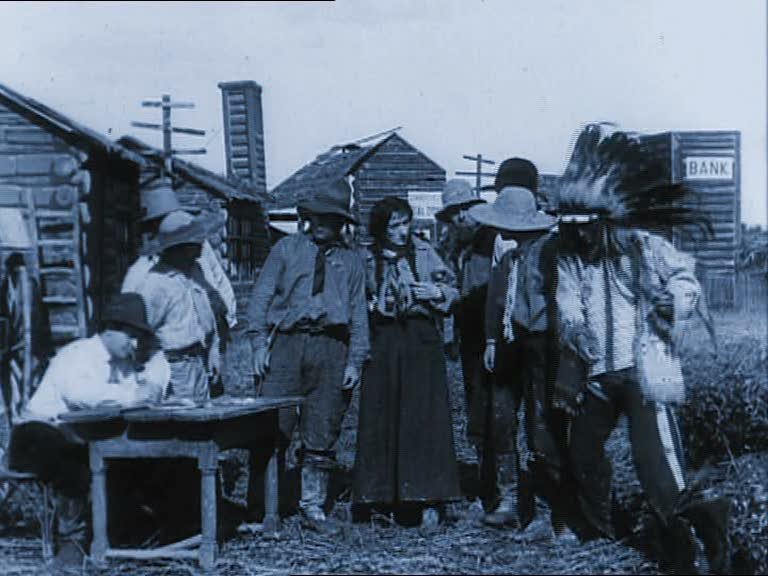LA PRAIRIE EN FEU
Jean Durand (FR 1912)
This film anticipates several of the later BISON 101 Indian pictures produced by Thomas Ince (e.g., The Massacre, The Lieutenant’s Last Fight) in that it tells a story about how American Indians were treated badly by the United States government. In South Dakota (where Hamman had lived among Sioux Indians), Chief Yellow Fox gets into a dispute with a government agent over compensation owed to his tribe, and the agent shoots and wounds him in the hand. After the agent’s wife (apparently also an Indian) bandages the wound, Yellow Fox reports the humiliation to his tribesmen, and they vow revenge. At night they set fire to the small town, and the settlers there flee on horseback and in carts and wagons. As the Indians attack one wagon, Yellow Fox is shot, and he goes off to die alone on a hilltop.
The second film that Durand and Hamman shot in the Camargue region, La Prairie en feu makes more use of its flat, marshy landscape for both the Indians and white settlers to travel across. The town of Sioux Falls, however, is little more than a few wooden buildings (with a barely visible bank and saloon, side by side), and the only evidence of the Indians’ fire comes in distant plumes of smoke and then the smoke engulfing the buildings. Tinting and toning helps overcome these limitations, especially in the concluding scenes. In the first, purple toning enhances the settlers’ herding of cattle across the watery plain, most notably in a painterly image of two bare trees reflected in the foreground water as horsemen and cattle come forward in the background. In the other, red tinting heightens the scene of Yellow Fox’s ironic death, as he staggers to the top of a burning hilltop, wraps himself in a robe, and lays down in the swirling smoke.
Richard Abel

scen: Joë Hamman.
cast: Joë Hamman (Yellow Fox), Berthe Dagmar (Mrs. Brooks), Ernest Bourbon (William Brooks), Gaston Modot, Pollos (indiani/Indians), Folco de Baroncelli (abitante di Sioux Falls/Sioux Falls inhabitant), Vesta Harold.
prod: Gaumont.
uscita/rel: 19.01.1912.
copia/copy: DCP, 300 m., 13’40”, col. (imbibito e virato/tinted & toned); did./titles: NLD.
fonte/source: Gaumont Pathé Archives, Saint-Ouen, Paris.


 Italiano
Italiano